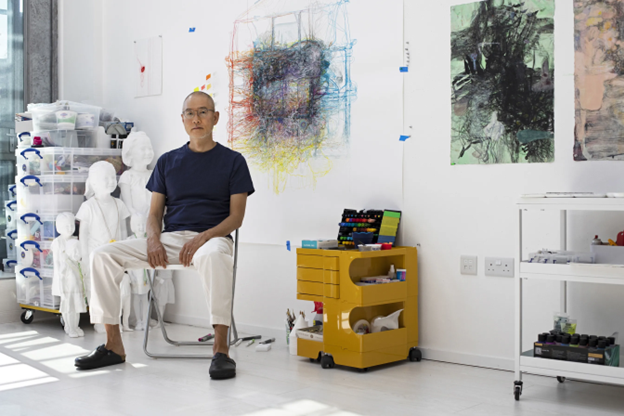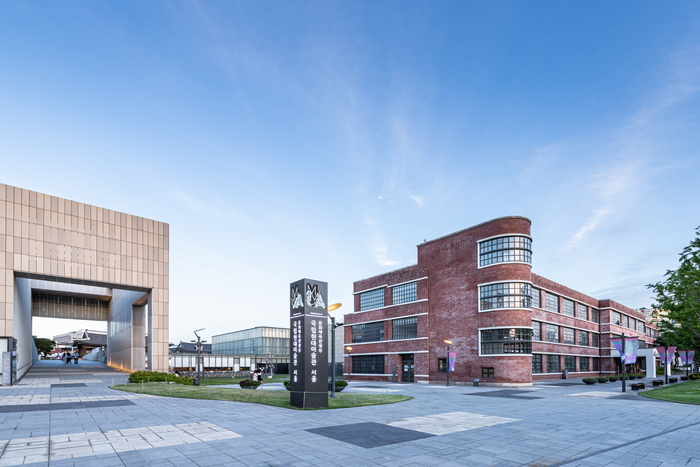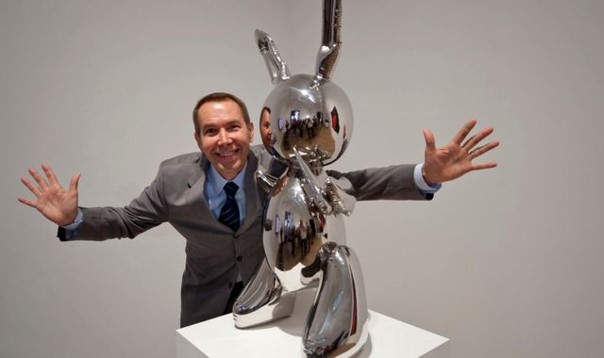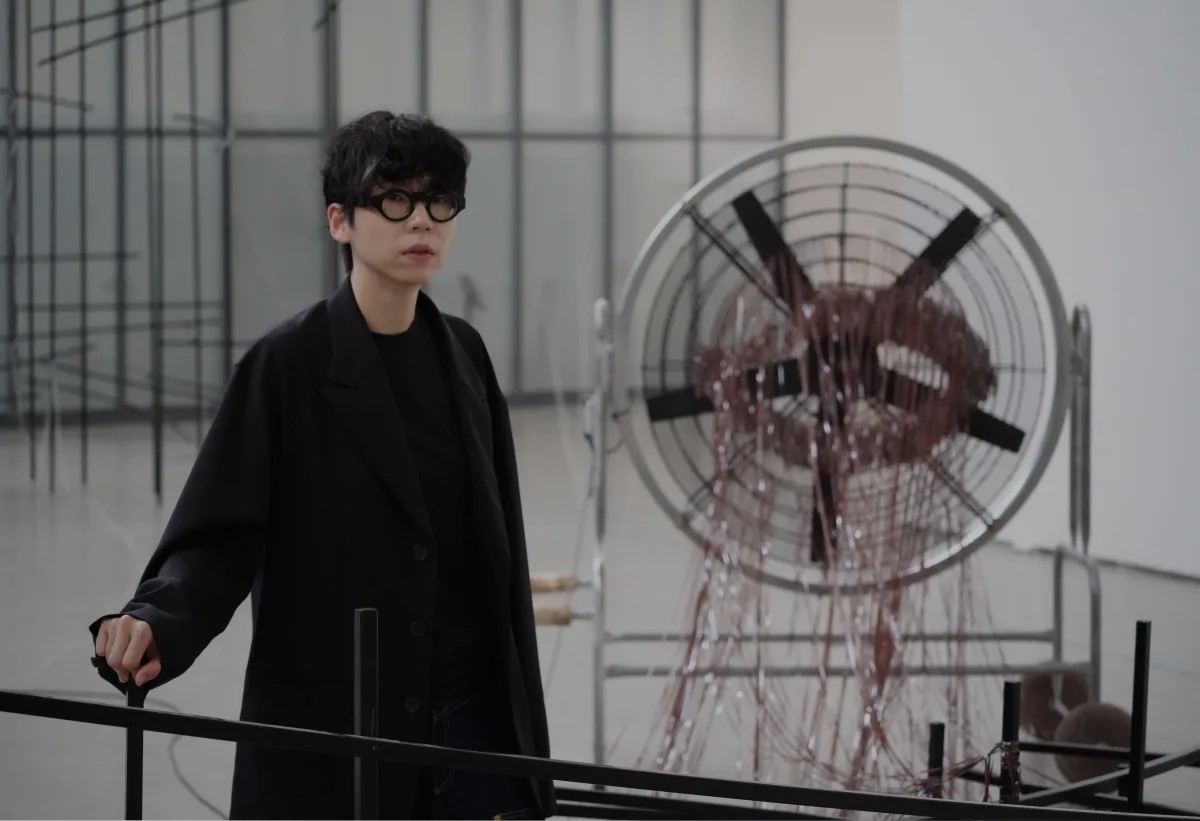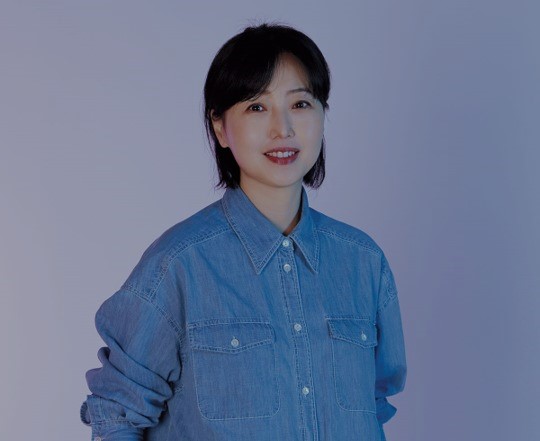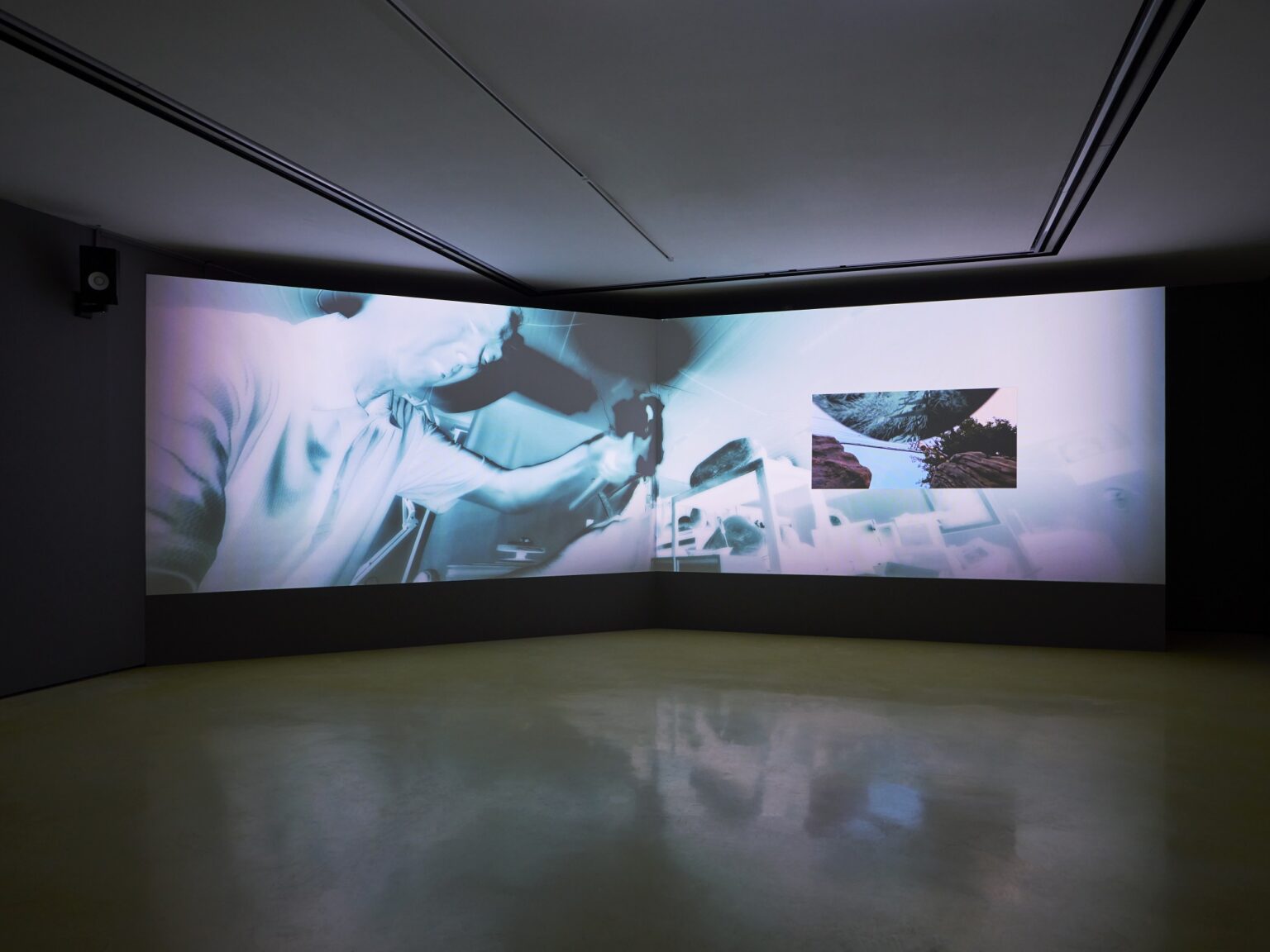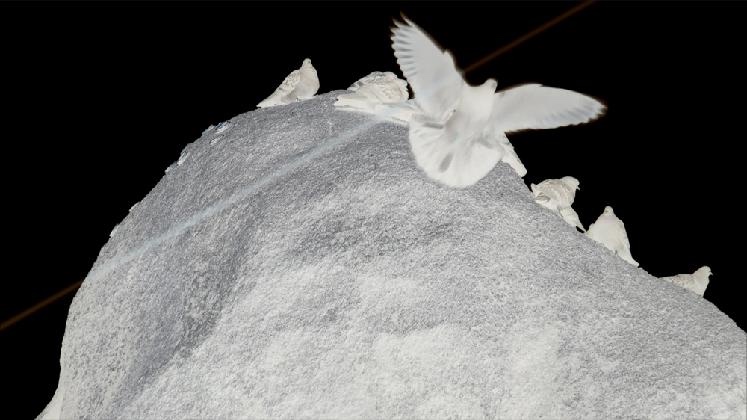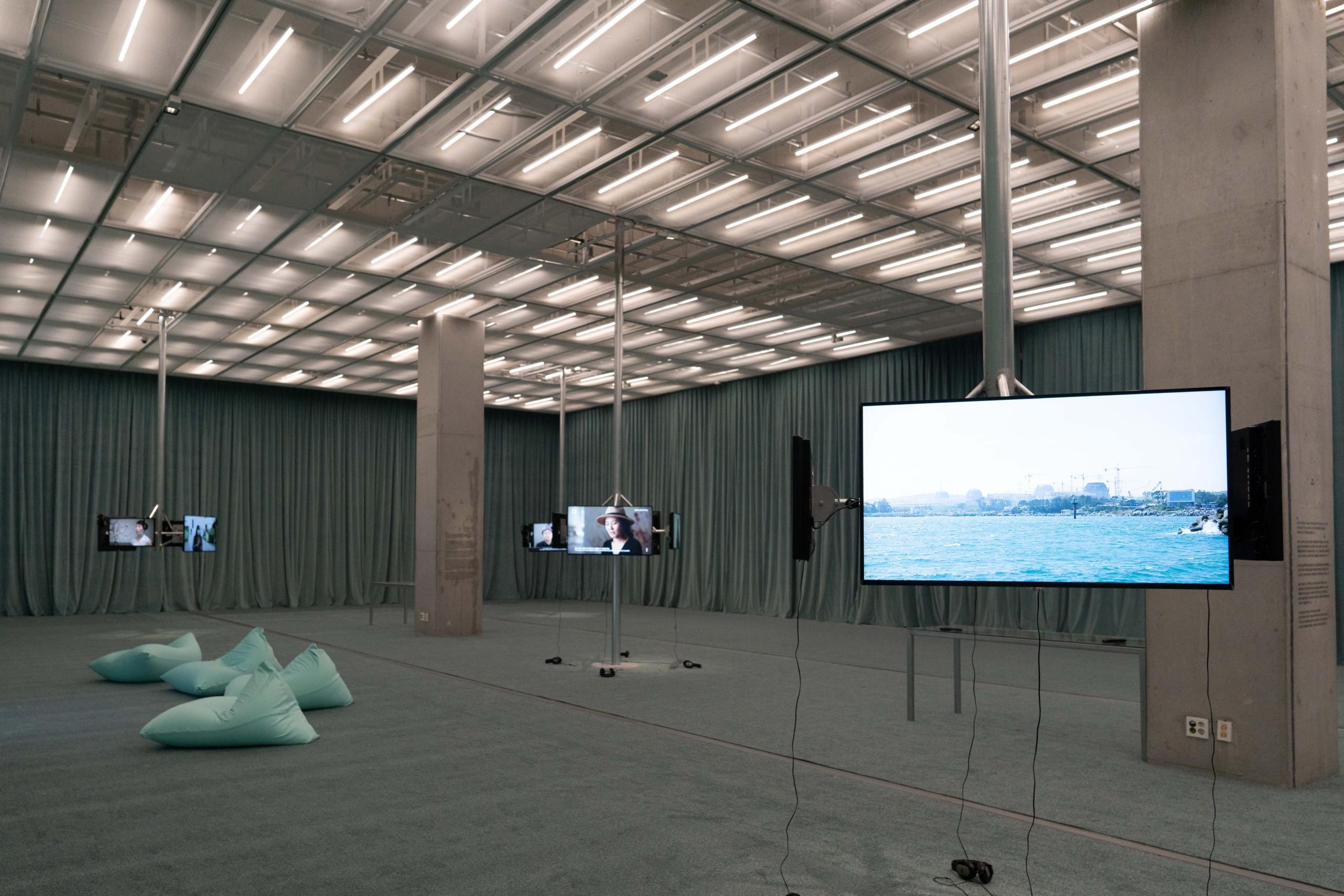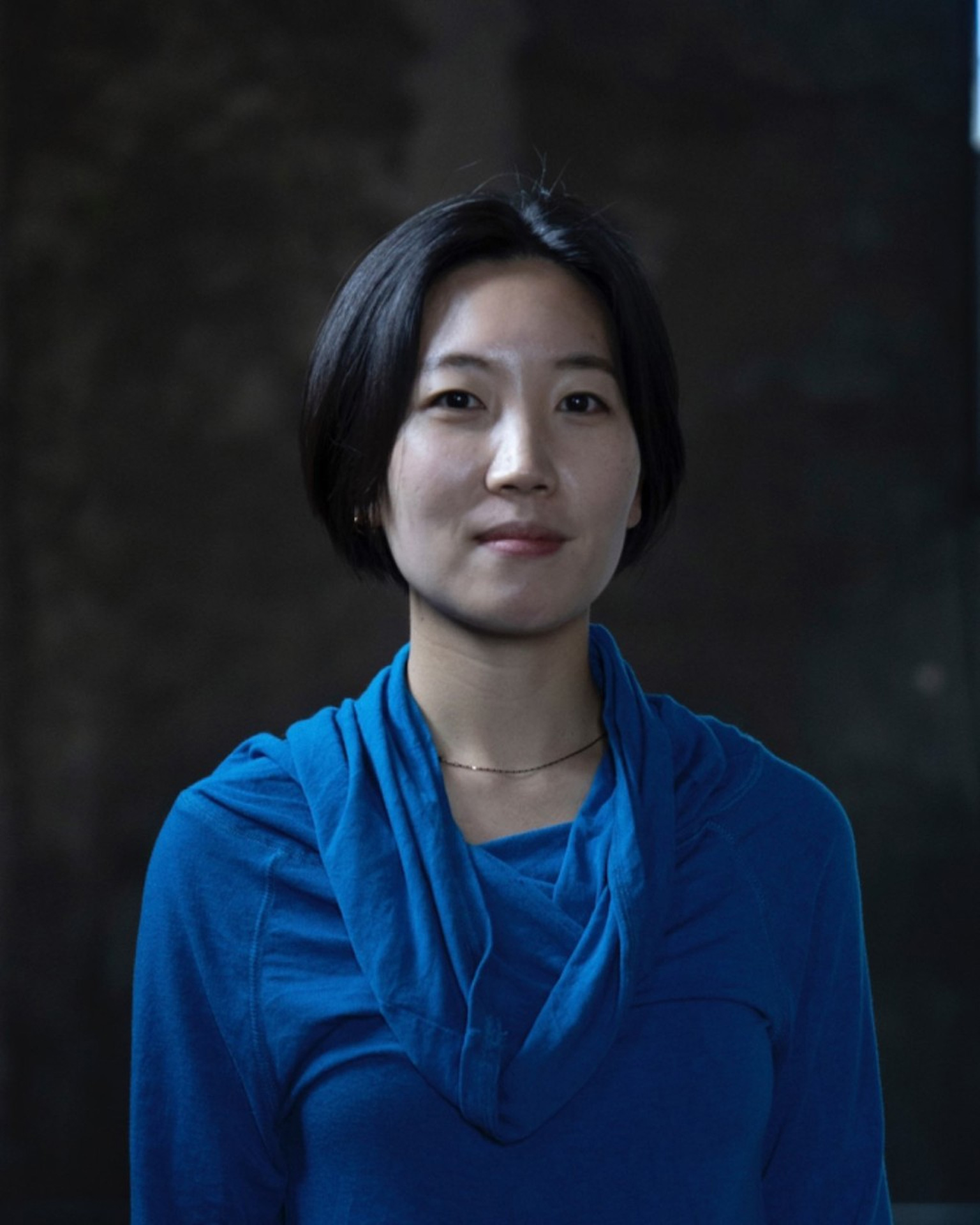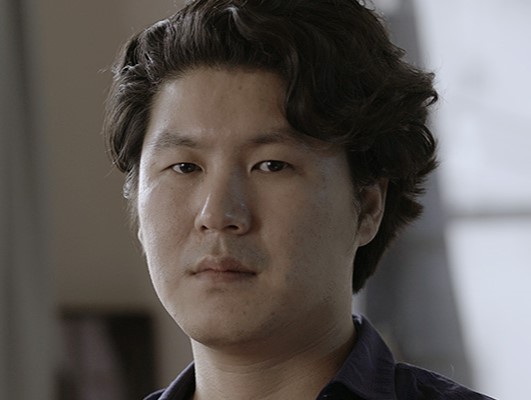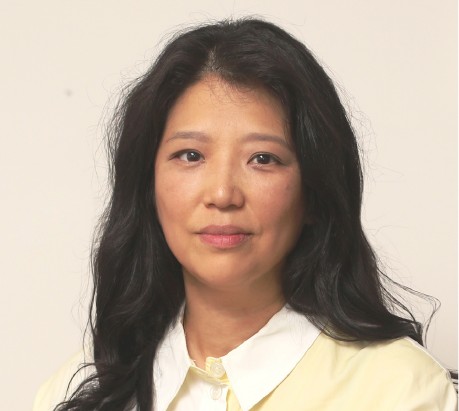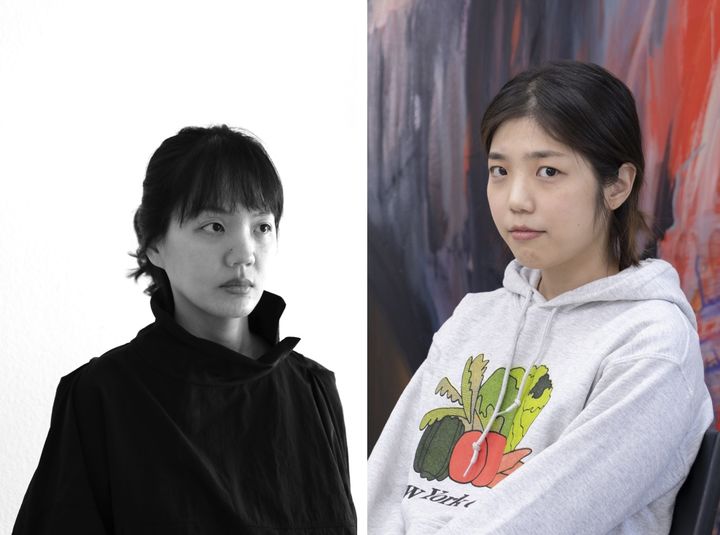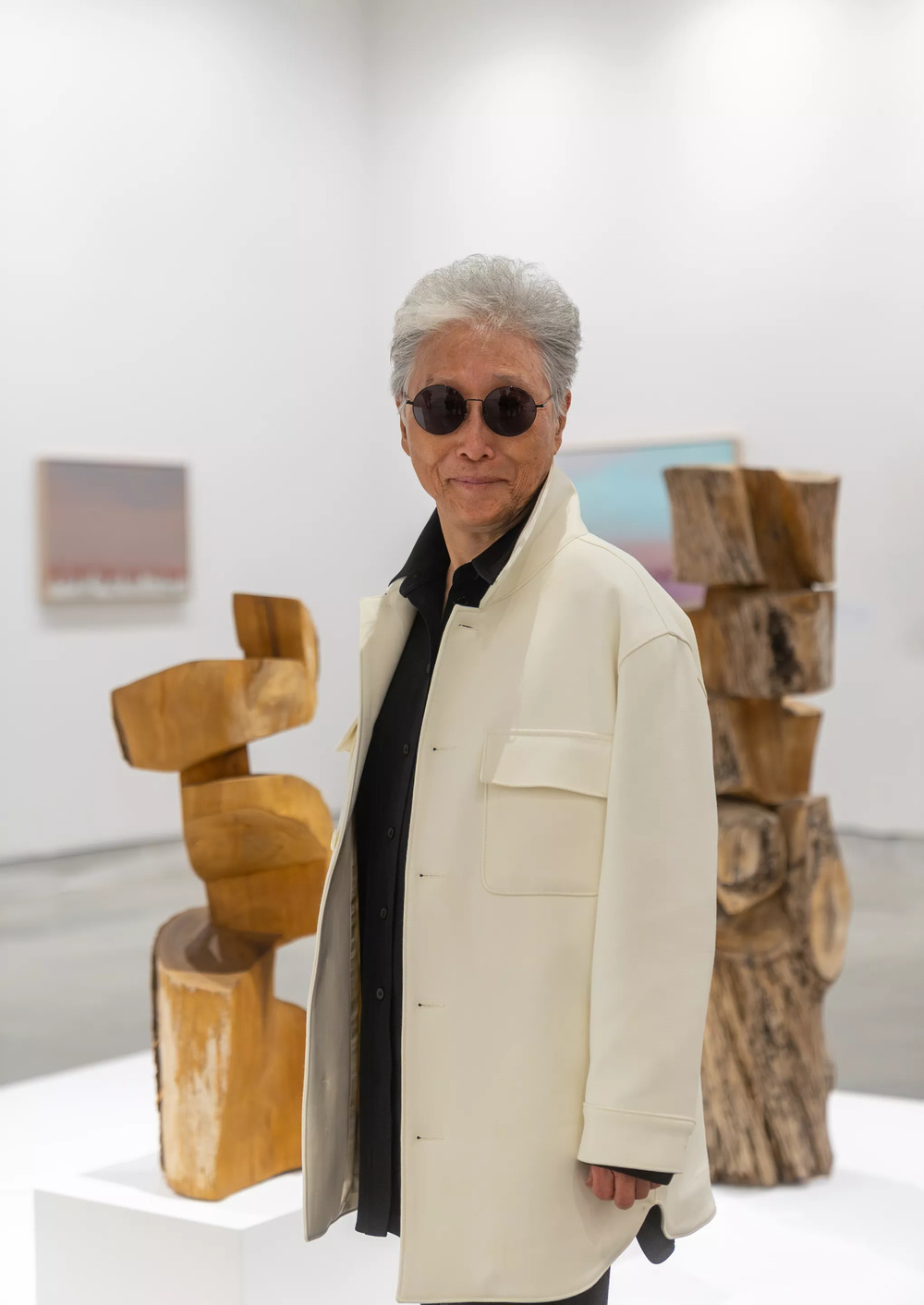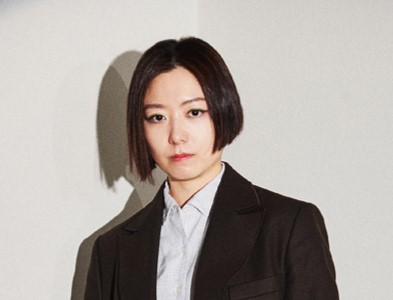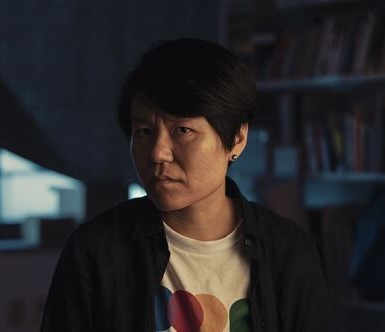Hayoun Kwon (b. 1981) explores the
possibilities of new media technologies, presenting a variety of video works
based on animation, 3D, and virtual reality (VR). Her work often deals with
stories that exist beyond recorded history, such as inaccessible places,
memories that live only in the mind, or events that have gone undocumented.
By constructing virtual spaces through
media technologies, the artist invites audiences into unexperienced worlds,
expanding them into new shared memories.
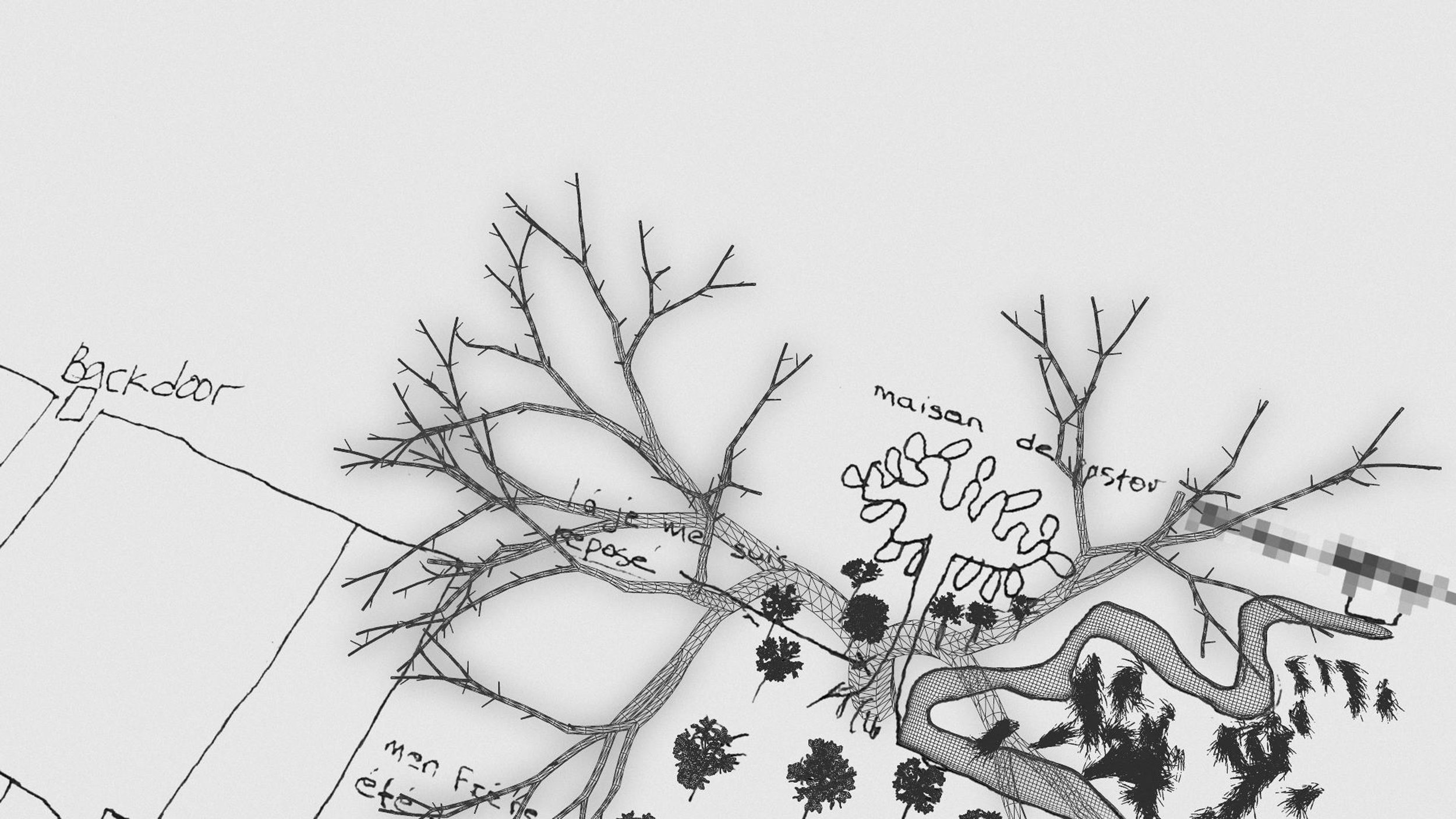 Hayoun Kwon, Lack
of evidence, 2011 ©Hayoun Kwon
Hayoun Kwon, Lack
of evidence, 2011 ©Hayoun KwonHayoun
Kwon’s early works primarily explore themes of identity and boundaries. For
instance, she focuses on the boundaries between collective and personal
memories surrounding recorded history, as well as identities that cannot be
fully narrated or represented.
One
example is her 2011 work Lack of evidence, which
reconstructs the childhood memories of Oscar, a Nigerian who sought asylum in
France, through animation. Oscar, the protagonist of the video, recounts his
experiences to seek asylum in France. However, the French government is
reluctant to believe his story, as it exists solely in his memory and lacks
concrete evidence.
The
artist reimagines Oscar’s unclear memories, which cannot be substantiated, and
visualizes his journey through 3D animation. This animation is overlaid with a
drawing of Oscar’s escape route, created by himself. In doing so, Kwon places
memories and experiences that never materialized into reality at the boundary
between reality and fiction, documenting them as a fictional documentary shaped
by the artist’s subjective interpretation.
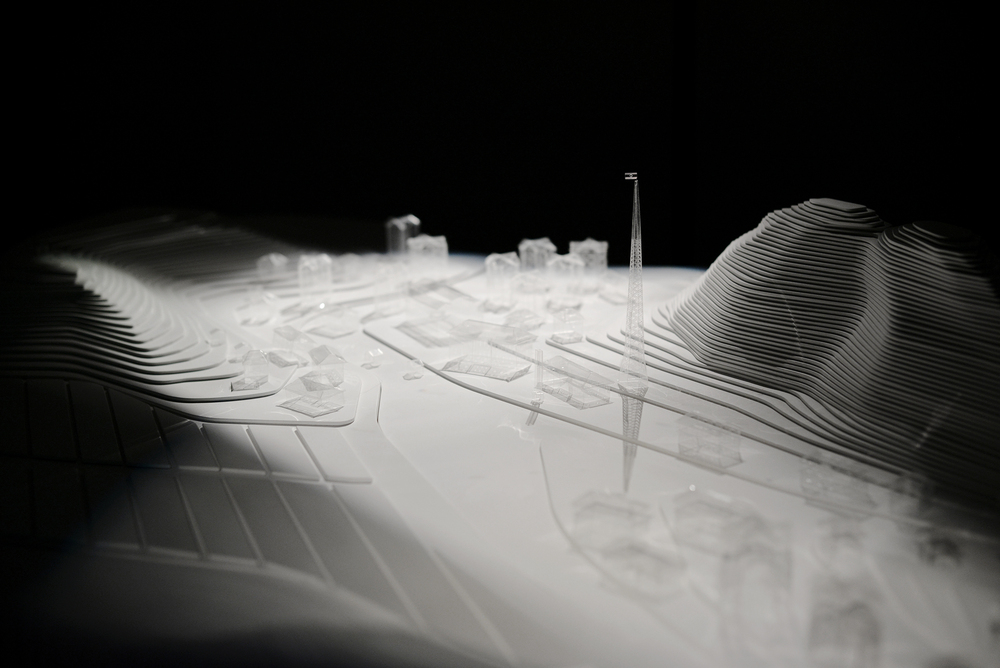 Hayoun Kwon,
Model Village, 2014 ©Hayoun Kwon
Hayoun Kwon,
Model Village, 2014 ©Hayoun KwonThe
2014 video work Model Village presents a fictional world
that reimagines the North Korean propaganda village, Kijong-dong, through the
artist’s imagination. During the production of this piece, Kwon sought
permission for two years to film the Kijong-dong village located near Kaesong,
North Korea, from the South Korean side of the Demilitarized Zone (DMZ).
However, her requests were ultimately denied.
As
a result, the artist chose to portray Kijong-dong—a real yet inaccessible place
that can only be approached through imagination—as a fictional space resembling
a film set rather than an actual village.
In
Model Village, Kijong-dong, as an imagined image, is
constructed with transparent models. These transparent houses appear and
disappear repeatedly depending on the intensity of the lighting. Notably, when
the light becomes particularly strong, the houses vanish entirely, leaving
behind only long shadows. Through this, the artist highlights the disappearance
of materiality and the remaining of only images, evoking the existence of Kijong-dong
as situated between reality and illusion.
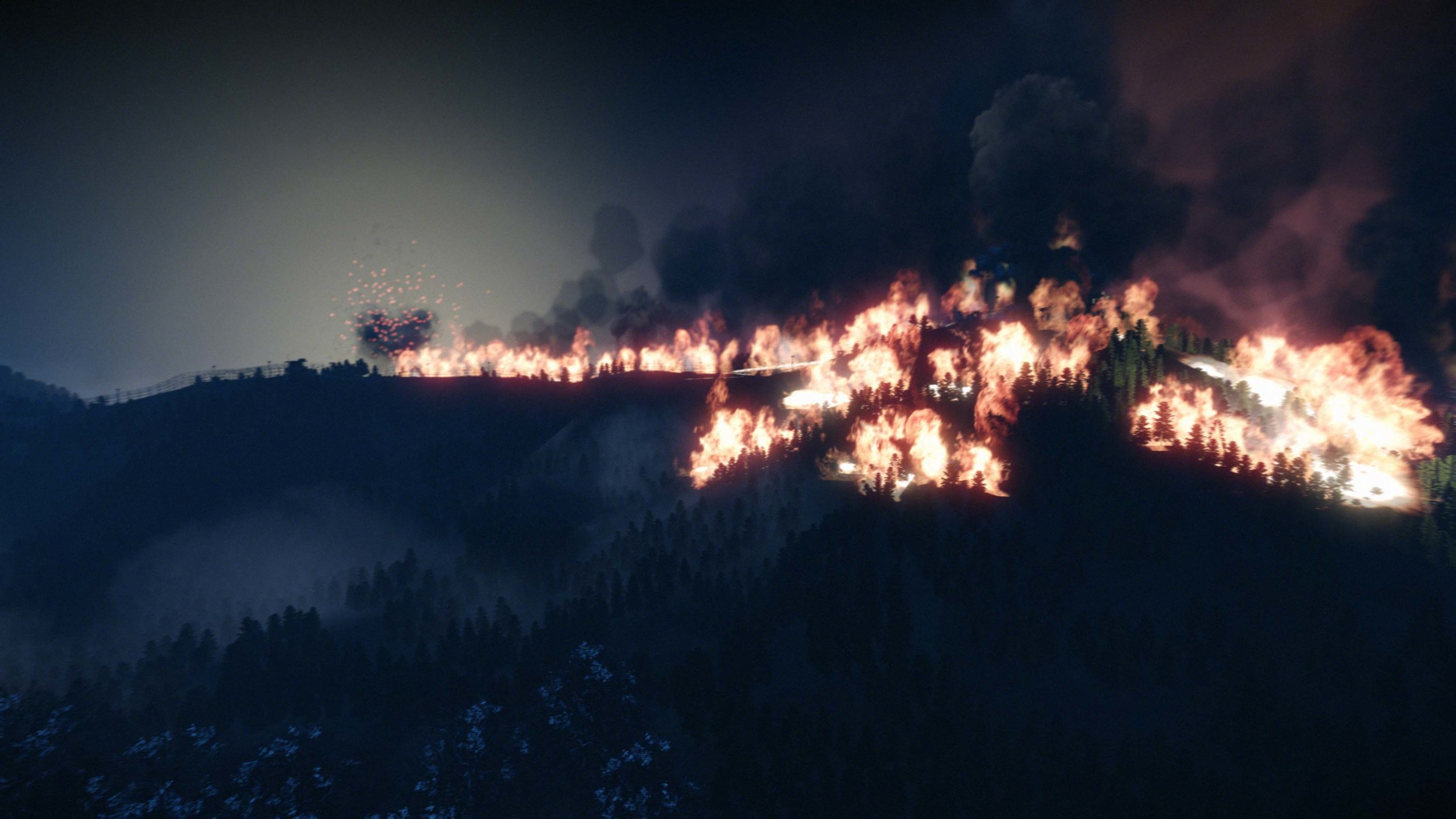 Hayoun Kwon,
489 Years, 2015/2016 ©Hayoun Kwon
Hayoun Kwon,
489 Years, 2015/2016 ©Hayoun KwonFollowing
Model Village, Hayoun Kwon developed an interest in the DMZ
as an in-between space, leading her to conduct interviews with a former South
Korean soldier. Her video work 489 Year (2015/2016) follows
the memories of Mr. Kim, a reconnaissance soldier who once served in the DMZ.
The
video reconstructs a new space-time based on Mr. Kim’s testimony about his
experiences conducting reconnaissance missions in the DMZ and his discovery of
areas dominated by unmarked mines. The locations described in his story are
places prohibited to human entry, where nature has been left to reign entirely.
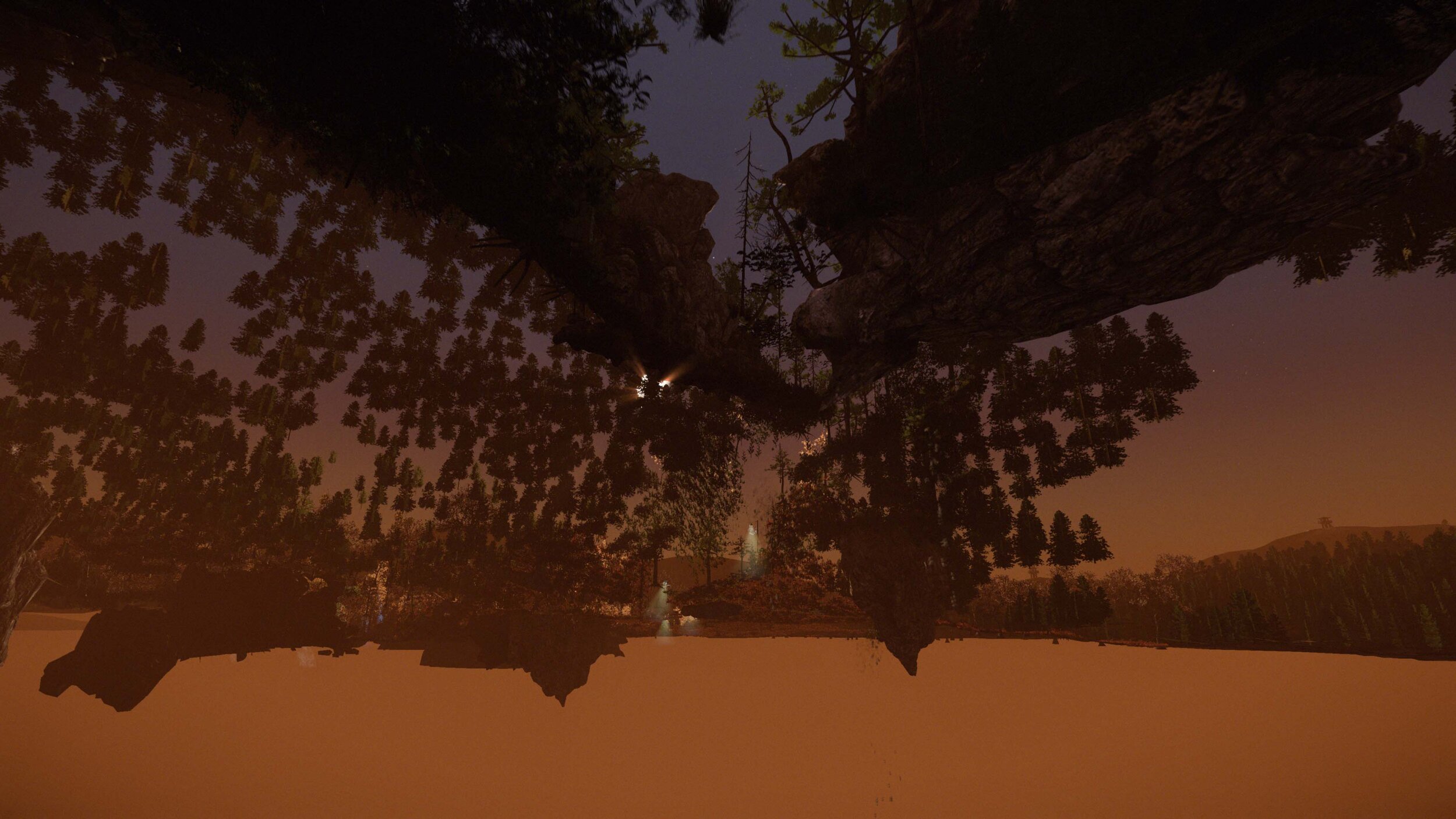 Hayoun Kwon,
489 Year,s 2015/2016 ©Hayoun Kwon
Hayoun Kwon,
489 Year,s 2015/2016 ©Hayoun KwonThrough
Mr. Kim’s story, Hayoun Kwon imagines the landscapes of an unreachable time and
space, as well as the sensations within them. The vivid experience Kim
describes—fantastical images of plants he had never seen before silhouetted
under moonlight, combined with the life-or-death tension caused by the
ever-present threat of North Korean soldiers and landmines—is reimagined
through the artist’s lens.
To
convey his story more vividly, Kwon chose virtual reality (VR) as her medium.
VR, which unfolds entirely within the viewer’s personal field of vision, allows
for a more immersive experience of Kim’s memories. The DMZ in Kim’s
recollections becomes an intimate encounter for the viewer through the
intermediate space of virtual reality crafted by the artist.
In
this way, both Model Village and 489 Years
invite viewers to briefly enter spaces that cannot be directly experienced. By
evoking invisible borders of division and collective identity, these works
summon ambiguous boundaries and incomplete memories.
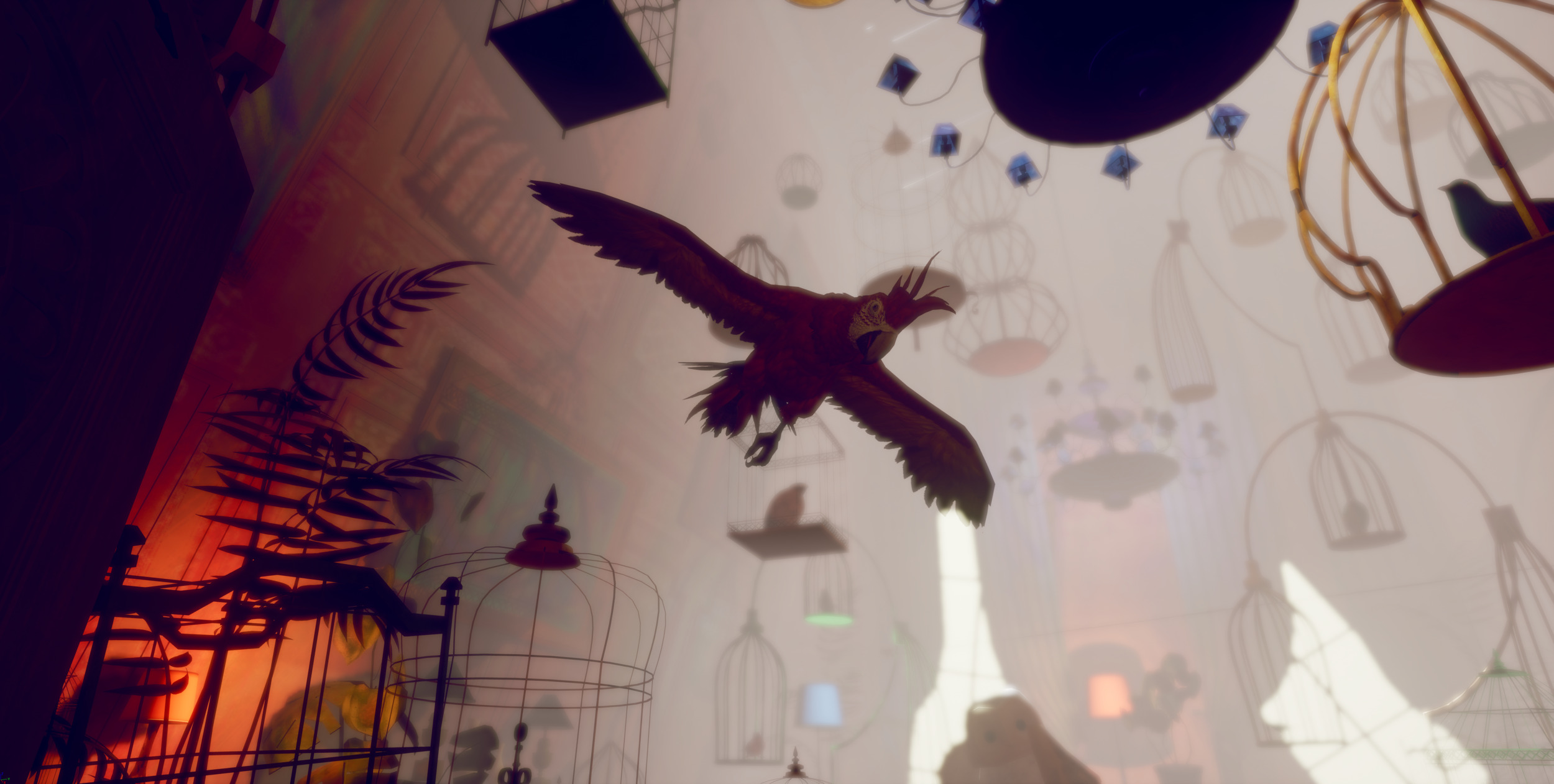 Hayoun Kwon,
The Bird Lady, 2017 ©Hayoun Kwon
Hayoun Kwon,
The Bird Lady, 2017 ©Hayoun KwonIn
her 2017 work The Bird Lady, Hayoun Kwon once again employs
VR technology as a medium to bridge reality and imagination. While her previous
works followed a linear structure dictated by the narrator’s story, The
Bird Lady incorporates the audience’s participation into the
narrative structure.
Based
on the memory of her teacher, Daniel, The Bird Lady is one
of Kwon’s most personal works. The space that viewers enter through a VR
headset is a recreation of the home of the "bird lady," who,
according to Daniel’s memory, was known for collecting birds. Within this
environment, the viewers physically moves around and explores a fascinating
scene filled with birds and birdcages.
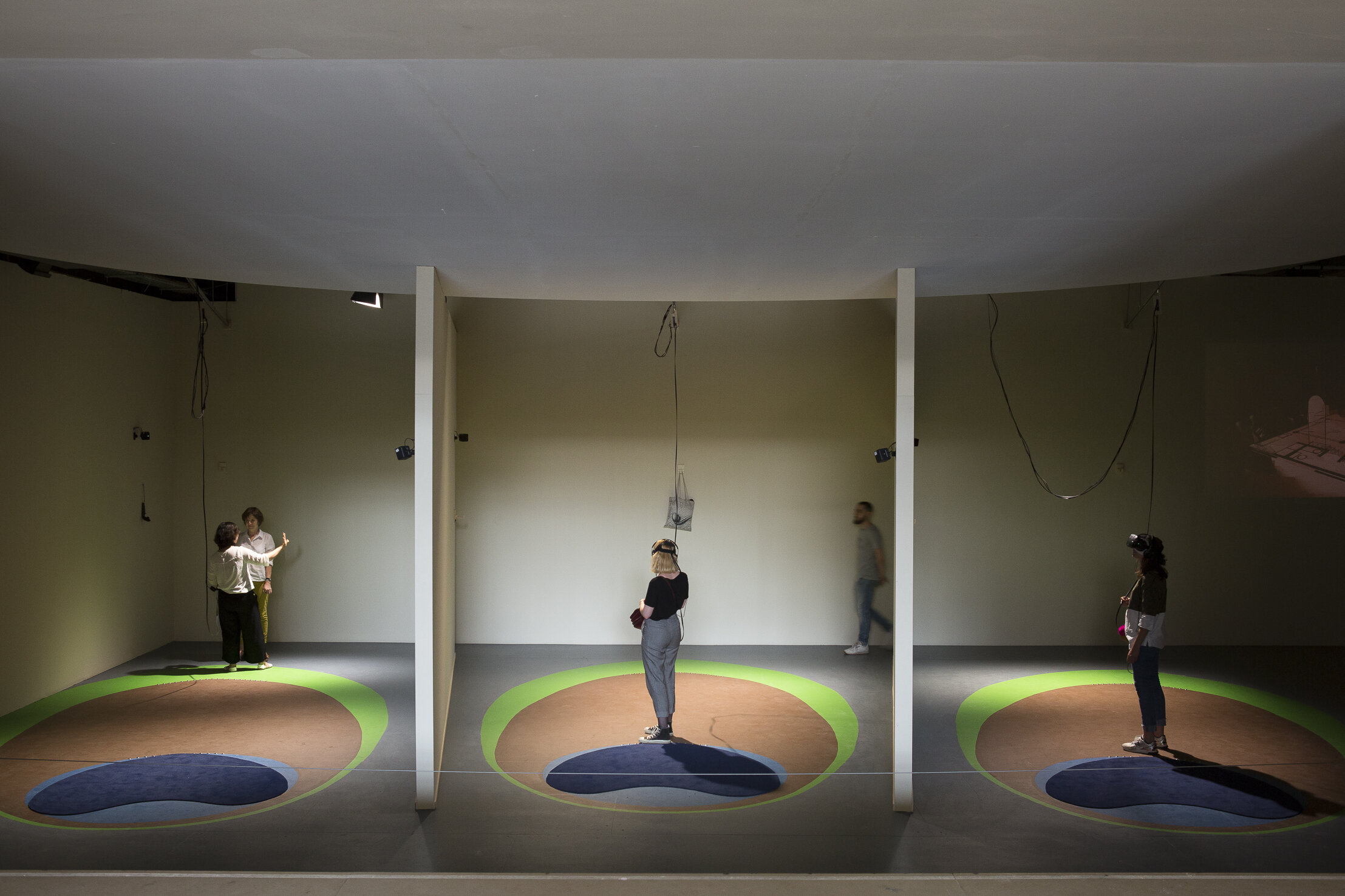 Hayoun Kwon,
The Bird Lady, 2017, Installation view at Palais de Tokyo ©Hayoun Kwon
Hayoun Kwon,
The Bird Lady, 2017, Installation view at Palais de Tokyo ©Hayoun KwonIn
The Bird Lady, the narrative unfolds according to each
viewer’s pace and movements, such as climbing stairs, walking, or pausing to
look around. Viewers are not only entering a space within someone else’s memory
but also gaining the ability to control and intervene in the time within it.
This allows for an intensified sensory presence in the virtual space, enabling
deeper immersion into another person’s memory.
Furthermore,
since the experience is conducted on an individual level, each viewer generates
a unique and distinct experience. Starting from someone else’s personal memory,
the work transitions into countless new personal dimensions for its audience,
where it is reimagined and remembered anew.
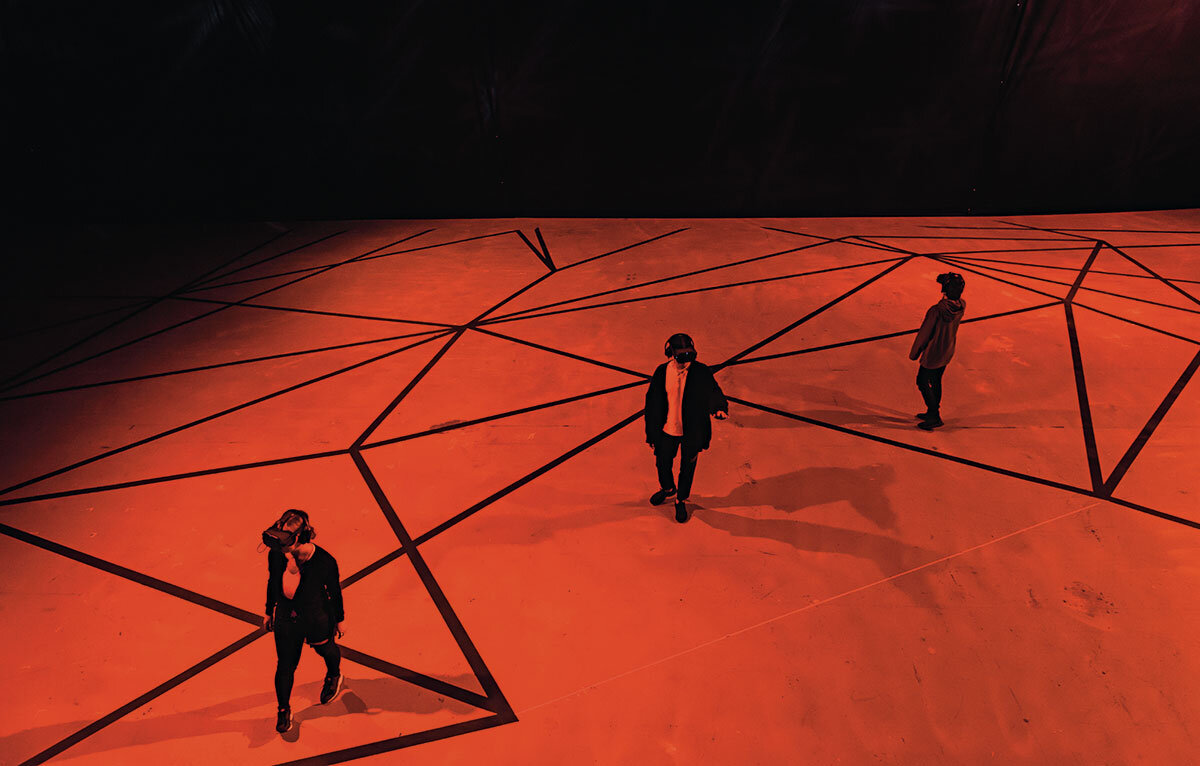 Hayoun Kwon,
Peach Garden, 2019, Installation view of “Paradise Art Lab
Showcase 2019” (Studio Paradise, 2019) ©Hayoun Kwon
Hayoun Kwon,
Peach Garden, 2019, Installation view of “Paradise Art Lab
Showcase 2019” (Studio Paradise, 2019) ©Hayoun KwonIn
another virtual reality project, Peach Garden (2019), Hayoun
Kwon expanded the interactive scope, enabling viewers to move freely within a
larger space. This work also debuted the world’s first VR technology allowing
up to four people to experience the piece simultaneously. In the vast, empty
space, the slow movements of the viewers themselves become part of the artwork.
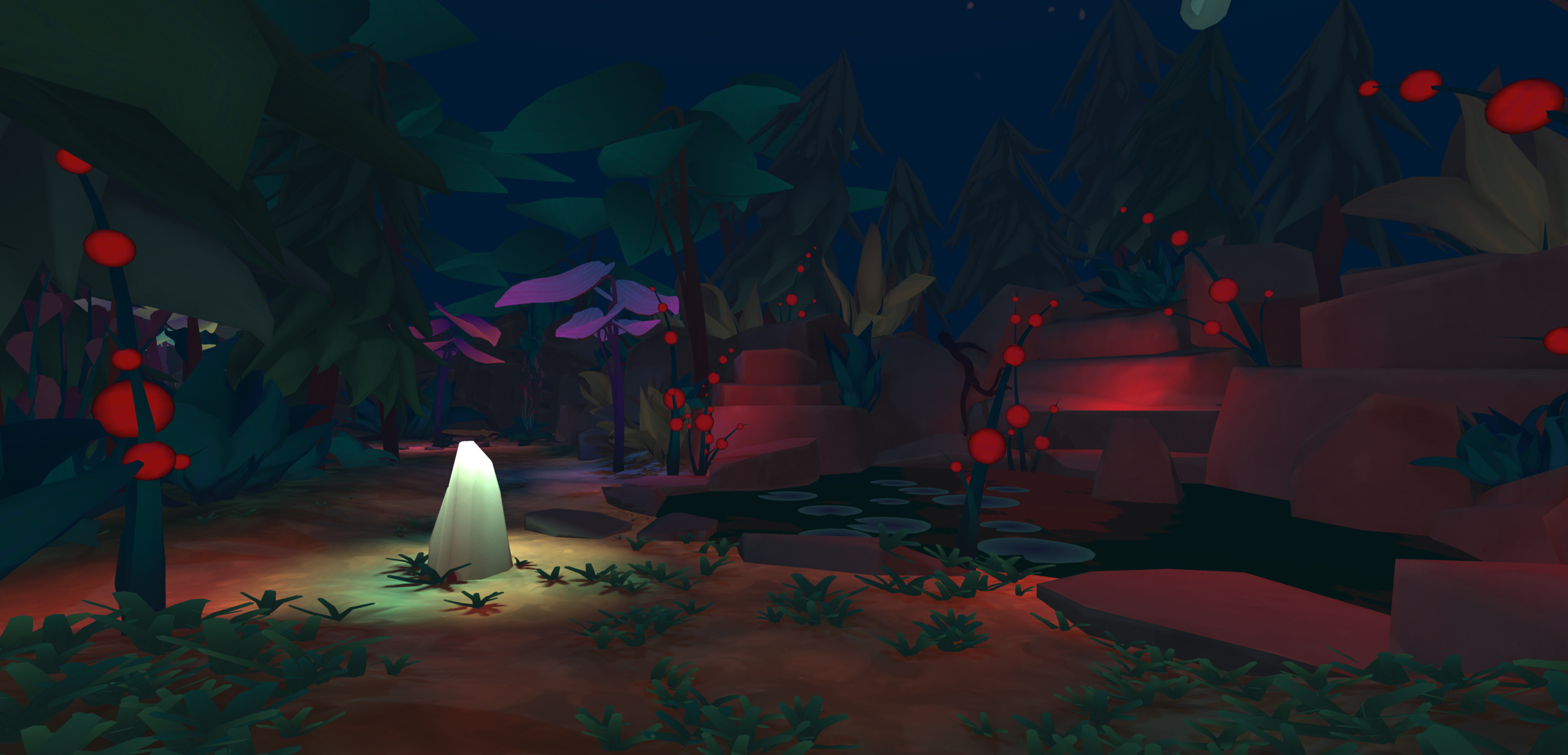 Hayoun Kwon,
Peach Garden, 2019 ©Hayoun Kwon
Hayoun Kwon,
Peach Garden, 2019 ©Hayoun KwonInspired
by Dream Journey to the Peach Blossom Land by early
Joseon-era painter Ahn Gyeon, Peach Garden brings to life a
mesmerizing and surreal world where the laws of nature do not apply. The space
is divided into five distinct realms, but as viewers walk and listen within the
virtual reality, they begin to lose their sense of orientation, making it difficult
to discern which realm they are in. This blurs the boundaries between spaces.
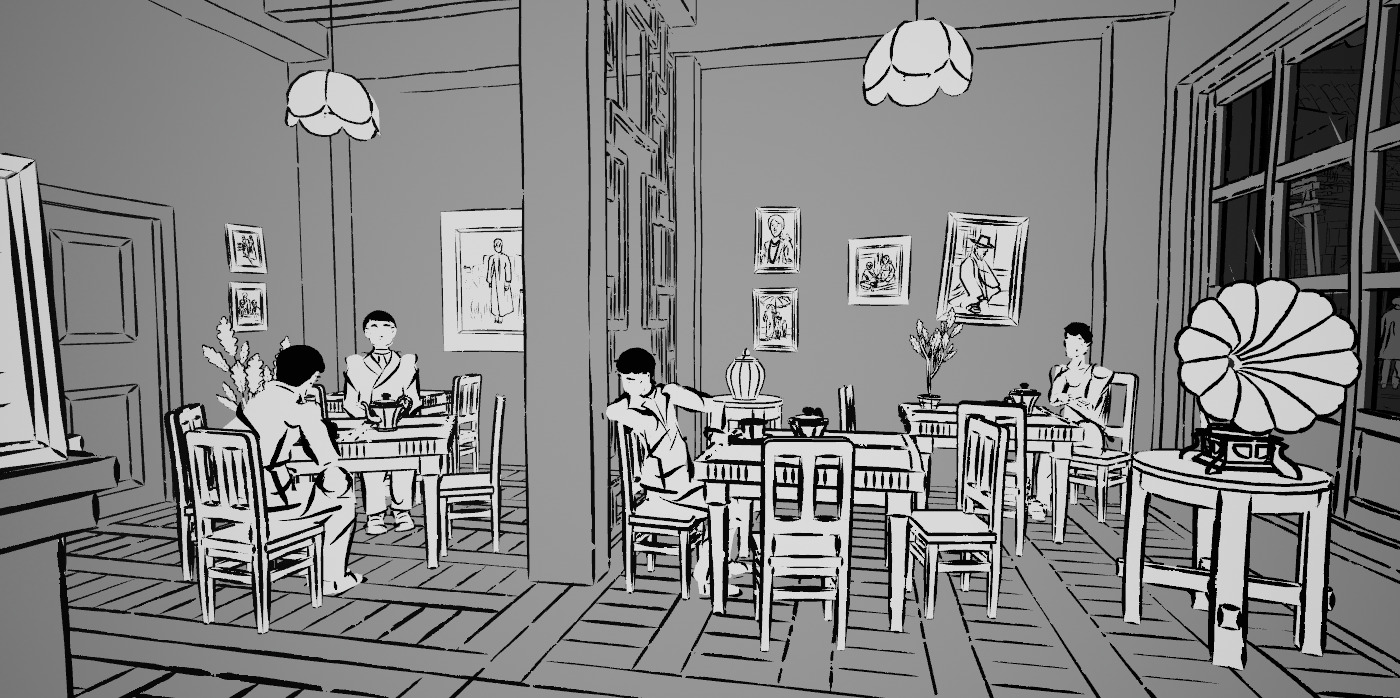 Hayoun Kwon,
Kubo, Walks the city, 2021 ©Hayoun Kwon
Hayoun Kwon,
Kubo, Walks the city, 2021 ©Hayoun KwonWhile
Hayoun Kwon’s earlier works reconstructed intimate personal memories to create
virtual spaces for indirect experiences, starting in the 2020s, she began to
explore public spaces and historical narratives. Her 2021 work, Kubo,
Walks the city, delves into the landscapes and newspaper archives of
early 20th-century Seoul, shedding light on the boundaries between freedom and
censorship.
Kubo,
Walks the city is a virtual reality piece inspired by the 1934 novel A
Day in the Life of Kubo by Korean novelist Park Taewon. Kwon adds her
interpretation of the era to reimagine the narrative in VR. Through the VR
headset, viewers follow Kubo’s journey, experiencing the cityscape of that era.
The
urban landscapes encountered in the experience appear as a black-and-white
world, resembling a comic book, populated with 2D characters. This visual style
is inspired by Manmunmanhwa, a popular satirical cartoon
genre of the time, which aligns with Kubo’s critical perspective.
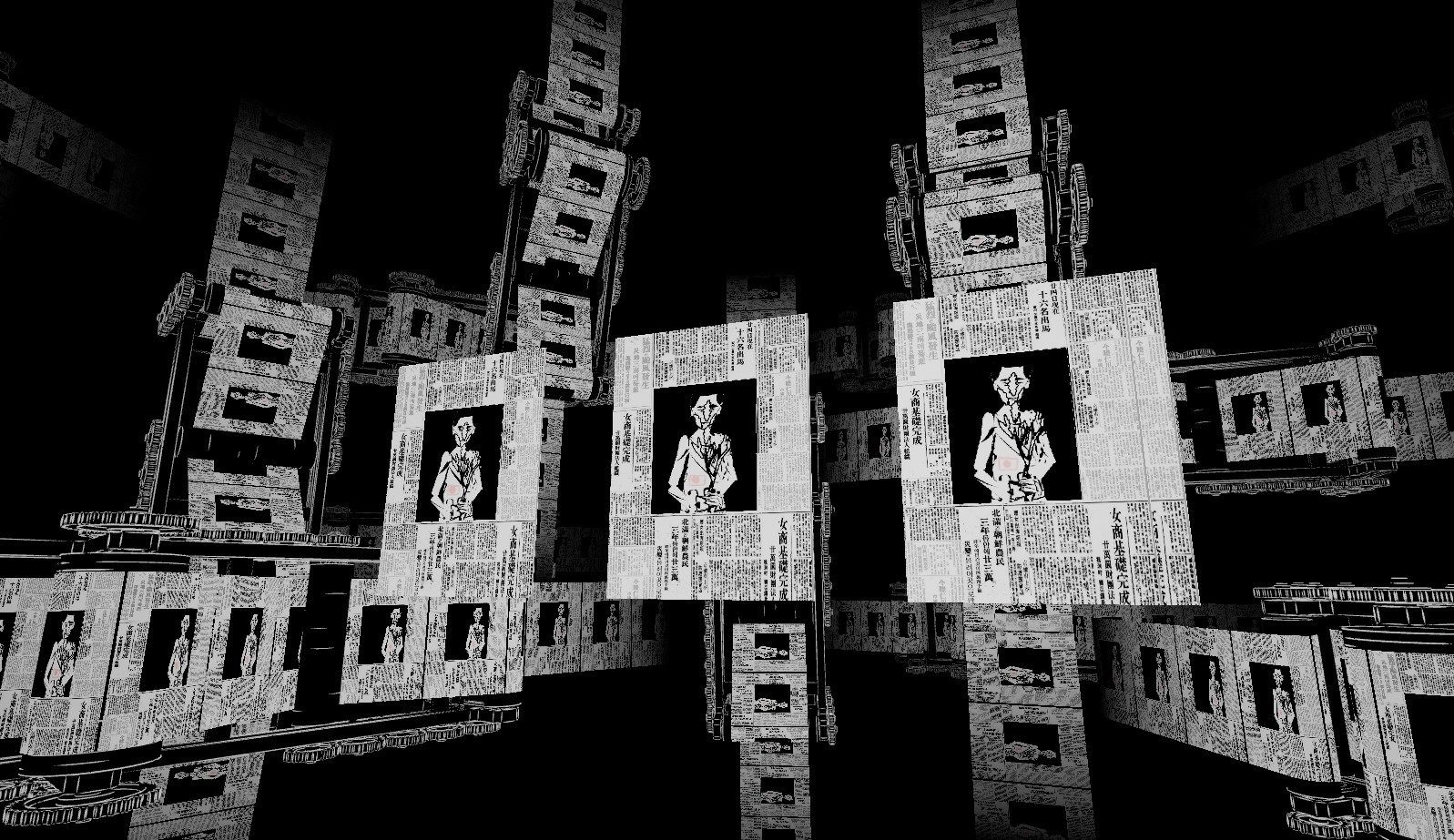 Hayoun Kwon,
Kubo, Walks the city, 2021 ©Hayoun Kwon
Hayoun Kwon,
Kubo, Walks the city, 2021 ©Hayoun KwonDue
to press suppression in the 1930s, political cartoons criticizing the
government could not be published. Instead, cartoonists turned to Manmunmanhwa,
satirical cartoons that subtly critiqued society by depicting urban landscapes
and social realities. Hayoun Kwon brought the essence of these urban lives
portrayed in Manmunmanhwa into the new medium of virtual
reality.
In
Kubo, Walks the city, the characters inspired by Manmunmanhwa
reveal issues like materialism, the marginalization of women, and youth
unemployment, which resonate with contemporary societal challenges. This
creates a layered cognitive experience where past and present overlap.
Meanwhile, parts of the visual narrative are obscured in black, symbolizing the
press censorship imposed by Japanese colonial rule at the time, allowing
viewers to experience the era's restrictions on free expression.
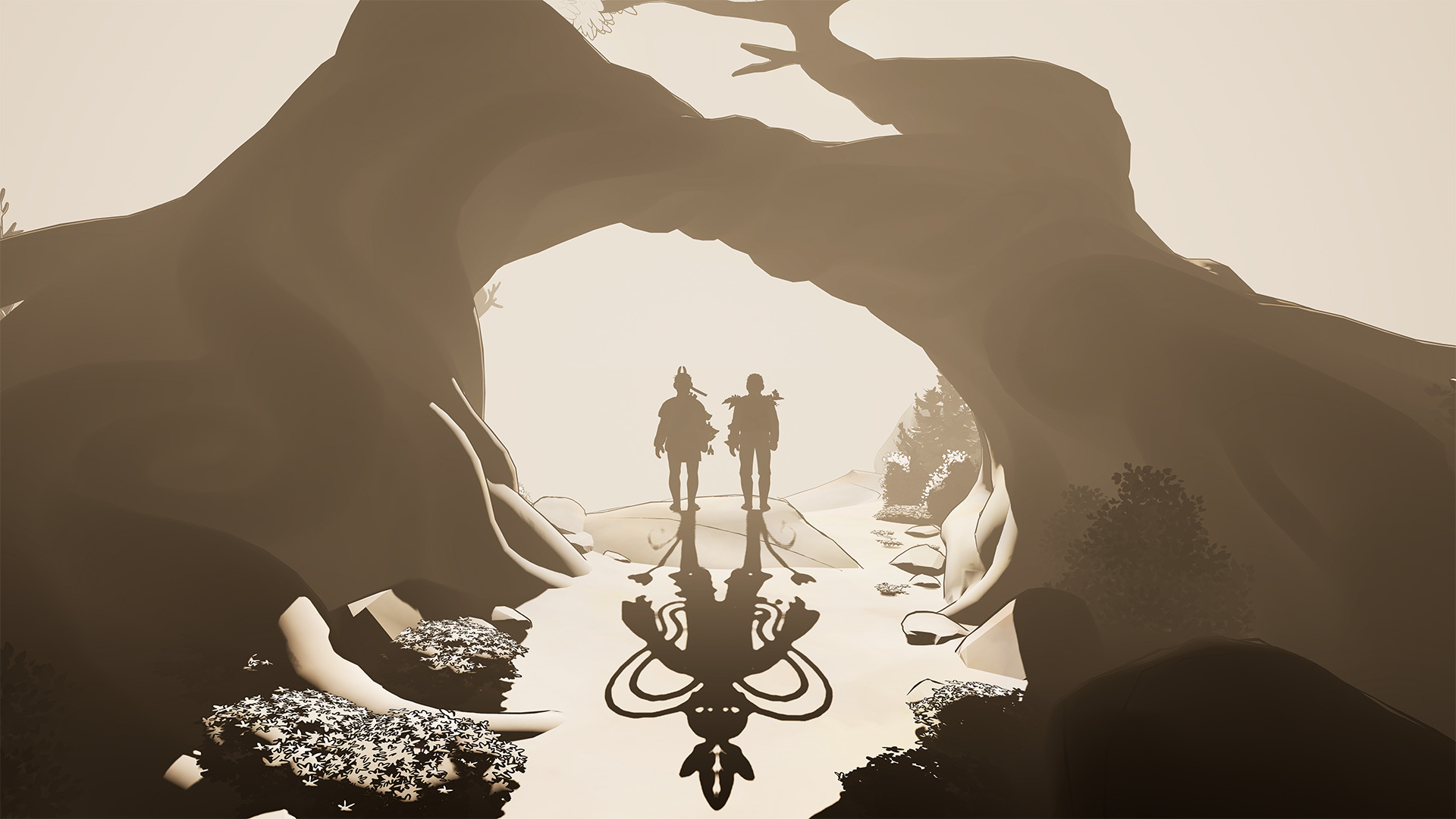 Hayoun Kwon,
The Guardians of Jade Mountain, 2024 ©Hayoun Kwon
Hayoun Kwon,
The Guardians of Jade Mountain, 2024 ©Hayoun KwonHer
new work, The Guardians of Jade Mountain (2024), currently
being showcased in the "Korea Artist Prize 2024" exhibition at the
National Museum of Modern and Contemporary Art Korea (MMCA), is based on a
historical legend surrounding Jade Mountain, located in Taiwan. During Japanese
occupation of Taiwan, the Bunun clan, an indigenous ethnic group living in Jade
Mountain, strongly resisted. However, their stories and voices were not
recorded in history.
The
artist focused on the story of an anthropologist from Japan, Ushinosuke Mori,
and his friendship with the leader of the Bunun clan, which she encountered
during her initial research. By persistently delving into the records of these
individuals, she uncovered the foundation of their story and recreated it as a
poetic landscape.
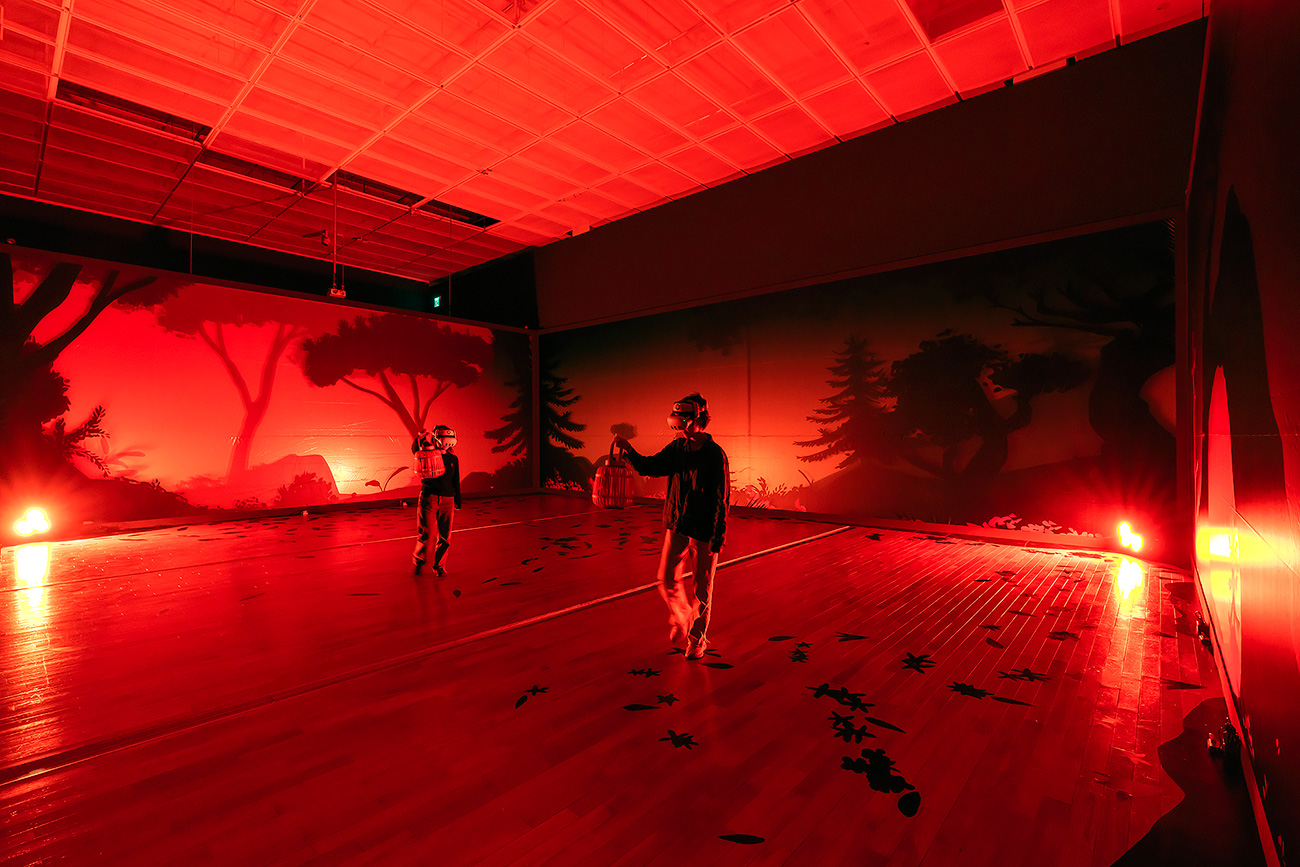 Hayoun Kwon,
The Guardians of Jade Mountain, 2024, Installation view of
“Korea Artist Prize 2024” (MMCA, 2024) ©MMCA
Hayoun Kwon,
The Guardians of Jade Mountain, 2024, Installation view of
“Korea Artist Prize 2024” (MMCA, 2024) ©MMCAIn
the virtual space created through VR media, the story of how Mori came to
Taiwan unfolds as the viewers enter Jade Mountain. Holding a bamboo lantern, the
viewers follow Mori’s footsteps and discover the flora and fauna of Jade
Mountain.
Kwon,
aiming to preserve the authenticity of the environment, has brought the plants
of Jade Mountain, which vary according to altitude, into the virtual reality. Moreover,
by linking the bamboo lantern held by the audience with the virtual bamboo
lantern, a more immersive experience is created. As the lantern startles an owl
into flight and the color of the leaves changes with the light, sensory moments
that could be experienced in the real world unfold through the audience’s body
in the virtual dimension.
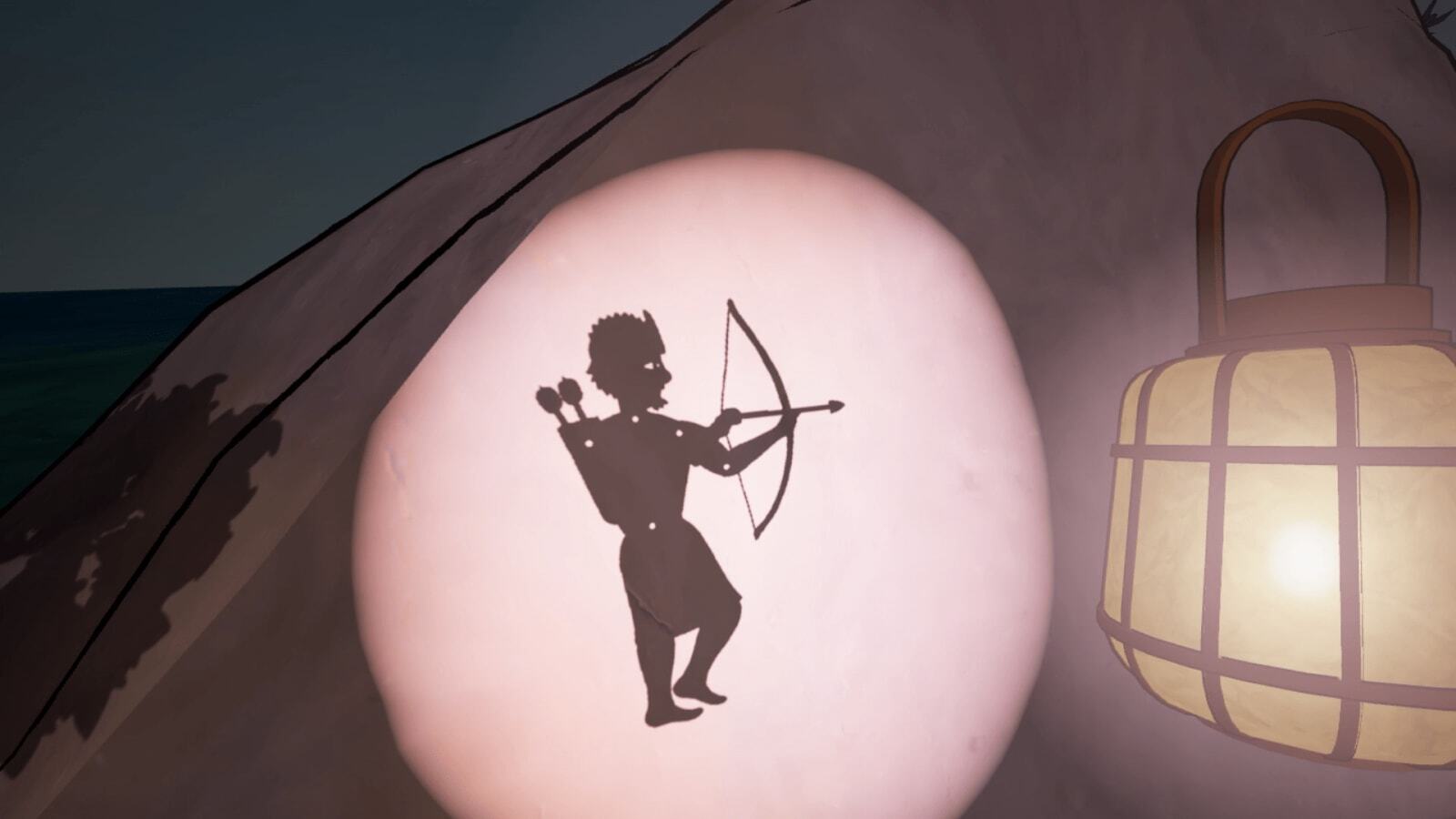 Hayoun Kwon,
The Guardians of Jade Mountain, 2024 ©Arario Gallery
Hayoun Kwon,
The Guardians of Jade Mountain, 2024 ©Arario GalleryBy
synchronizing the audience’s senses with reactions in the virtual reality, the
audience is left with vivid and distinct memories, comparable to real-life
experiences. As soon as the VR device is removed, the virtual Jade Mountain
vanishes, and the audience returns to the real world. However, the landscapes
of Jade Mountain and the sensations experienced within it linger in their
memory.
Her
work, which reconstructs both personal and collective memories, becomes
reimagined through virtual reality. As the boundary between reality and the
virtual blurs, so too does the distinction between self and other. In this way,
the stories of others are felt and experienced through the audience's physical
movements within her artwork, ultimately transforming into shared memories.
”VR
allows us to experience someone else's perspective as our own, which makes it
an excellent medium when dealing with subjective perspectives. I've always been
interested in subjective perspectives because my focus has been on personal
memories.
VR
turns out to be an appropriate medium for me to incorporate the stories I want
to tell into my work. I think I was drawn to it because it is the most powerful
medium when it comes to questioning reality.” (Hayoun Kwon, MMCA “Transport to
Another World” Artist Interview, 2024)
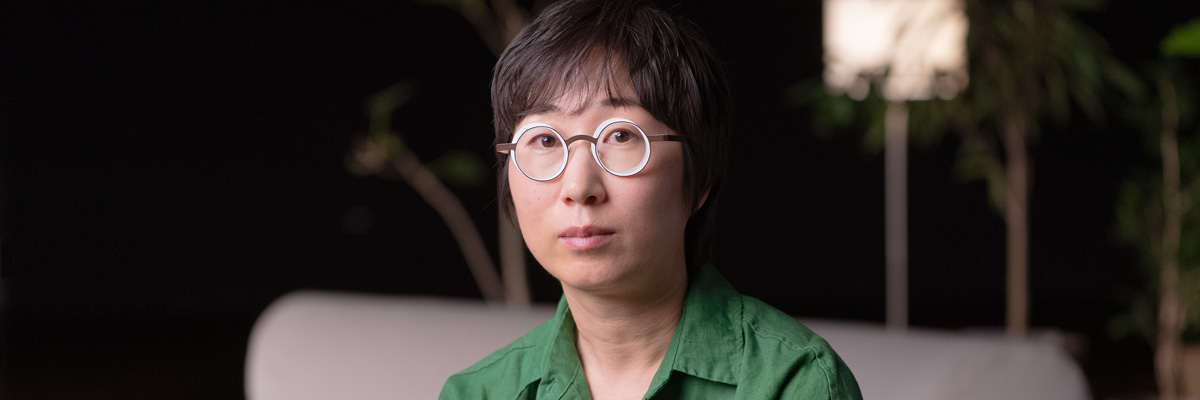 Artist Hayoun Kwon
©MMCA
Artist Hayoun Kwon
©MMCAHayoun
Kown graduated from Le Fresnoy – Studio National des Arts Contemprains and she
lives and works in France and Korea. Kwon has participated in solo exhibitions
at Arario Gallery (Shanghai, China) in 2019, Galerie Sator (Paris, France),
Doosan Gallery (Seoul, Korea) in 2018, Palais de Tokyo (Paris, France) in 2017,
Lectoure Photo and Art Center (Lectoure, France), École des Beaux-Art
Chateauroux (Chateauroux, France) in 2015.
Major
group exhibitions included Ulsan Museum of Art (Ulsan, Korea) in 2022, MMCA
(Seoul, Korea), Ilmin Museum of Art (Seoul, Korea) in 2021, the Busan Biennale
(Busan, Korea) in 2020, Ilmin Museum of Art (Seoul, Korea), Nicolas
Kunstahalle(Copenhagen, Denmark) in 2019, Arario Gallery Seoul (Seoul, Korea),
Jean Grand Duke of Contemporary Art (Luxembourg), Seoul Museum of Art (Seoul,
Korea) in 2018, National Museum of Modern and Contemporary Art (Seoul, Korea), Nam
June Paik Art Center (Youngin, Korea), MoMA (NY, US) in 2017, Art Sonje
Center(Seoul, Korea) in 2015.
She
won a number of awards in addition to Arc Electronica (Austria, 2018), Lisbon
Indie Animation (Portugal, 2017), Bucharest International Experimental Film
Festival (Romania, 2017), Palais de Tokyo (France, 2015), European Media
Festival (Germany, 2014), International Documentary Film Festival (Russia, 2014),
and etc. She has been selected as one of the four finalists for the 2024 Korea
Artist Prize and is currently showcasing her work at the MMCA Seoul.
References
- 권하윤, Hayoun Kwon (Artist Website)
- 아라리오갤러리, 권하윤 (Arario Gallery, Hayoun Kwon)
- 올해의 작가상 2024, 권하윤 (Korea Artist Prize 2024, Hayoun Kwon)
- 헬로! 아티스트, 권하윤 – 기억과 현실의 경계
- 국립현대미술관, MMCA필름앤비디오 – 또 다른 이야기 (National Museum of Modern and Contemproary Art Korea(MMCA), MMCA Film & Video – Because the Story Is Not the Same)
- 아트인사이트, [Opinion] VR로 경험하는 타인의 사적인 이야기 [미술/전시], 2024.07.22
- 국립현대미술관, “순간이동” 도록 (National Museum of Modern and Contemproary Art Korea(MMCA), Catalogue of “Transport to Another World”)



